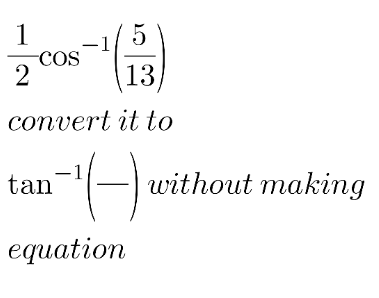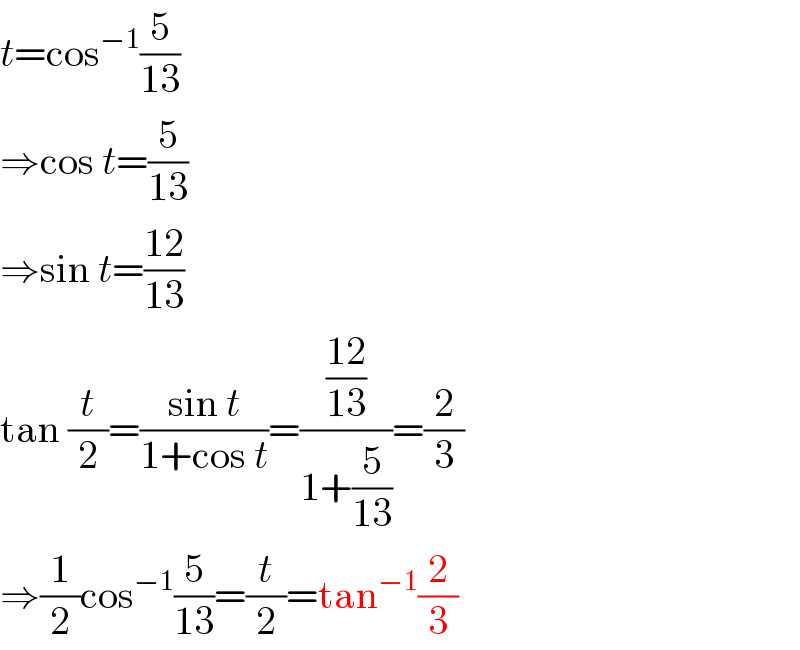Question Number 111079 by shahria14 last updated on 02/Sep/20

Answered by mr W last updated on 02/Sep/20

$${t}=\mathrm{cos}^{−\mathrm{1}} \frac{\mathrm{5}}{\mathrm{13}} \\ $$$$\Rightarrow\mathrm{cos}\:{t}=\frac{\mathrm{5}}{\mathrm{13}} \\ $$$$\Rightarrow\mathrm{sin}\:{t}=\frac{\mathrm{12}}{\mathrm{13}} \\ $$$$\mathrm{tan}\:\frac{{t}}{\mathrm{2}}=\frac{\mathrm{sin}\:{t}}{\mathrm{1}+\mathrm{cos}\:{t}}=\frac{\frac{\mathrm{12}}{\mathrm{13}}}{\mathrm{1}+\frac{\mathrm{5}}{\mathrm{13}}}=\frac{\mathrm{2}}{\mathrm{3}} \\ $$$$\Rightarrow\frac{\mathrm{1}}{\mathrm{2}}\mathrm{cos}^{−\mathrm{1}} \frac{\mathrm{5}}{\mathrm{13}}=\frac{{t}}{\mathrm{2}}=\mathrm{tan}^{−\mathrm{1}} \frac{\mathrm{2}}{\mathrm{3}} \\ $$
